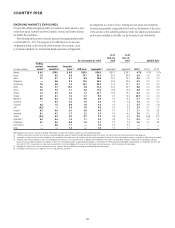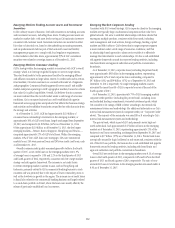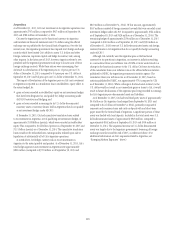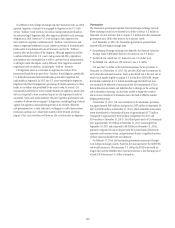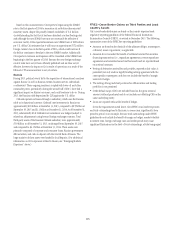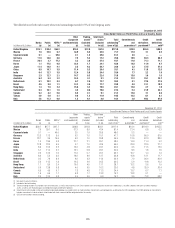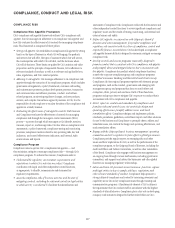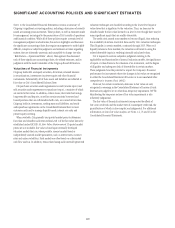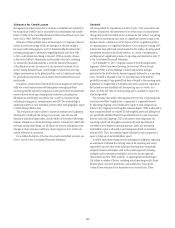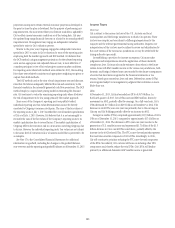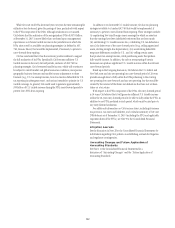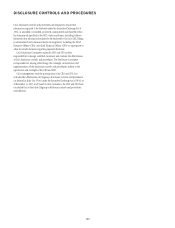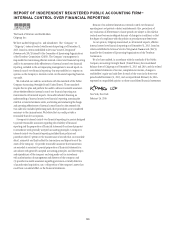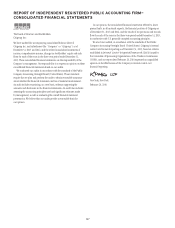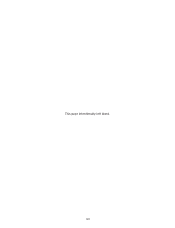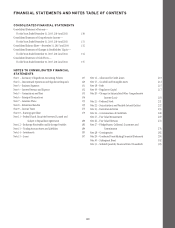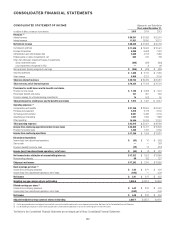Citibank 2015 Annual Report Download - page 138
Download and view the complete annual report
Please find page 138 of the 2015 Citibank annual report below. You can navigate through the pages in the report by either clicking on the pages listed below, or by using the keyword search tool below to find specific information within the annual report.120
Allowance for Credit Losses
Management provides reserves for an estimate of probable losses inherent in
the funded loan portfolio and in unfunded loan commitments and standby
letters of credit on the Consolidated Balance Sheet in the Allowance for loan
losses and in Other liabilities, respectively.
Estimates of these probable losses are based upon (i) Citigroup’s internal
system of credit-risk ratings, which are analogous to the risk ratings of
the major credit rating agencies; and (ii) historical default and loss data,
including rating agency information regarding default rates from 1983
to 2014, and internal data dating to the early 1970s on severity of losses
in the event of default. Adjustments may be made to this data, including
(i) statistically calculated estimates to cover the historical fluctuation
of the default rates over the credit cycle, the historical variability of loss
severity among defaulted loans, and the degree to which there are large
obligor concentrations in the global portfolio; and (ii) adjustments made
for specifically known items, such as current environmental factors and
credit trends.
In addition, representatives from both the risk management and finance
staffs who cover business areas with delinquency-managed portfolios
containing smaller balance homogeneous loans present their recommended
reserve balances based upon leading credit indicators, including loan
delinquencies and changes in portfolio size, as well as economic trends,
including housing prices, unemployment and GDP. This methodology is
applied separately for each individual product within each geographic region
in which these portfolios exist.
This evaluation process is subject to numerous estimates and judgments.
The frequency of default, risk ratings, loss recovery rates, the size and
diversity of individual large credits, and the ability of borrowers with foreign
currency obligations to obtain the foreign currency necessary for orderly debt
servicing, among other things, are all taken into account during this review.
Changes in these estimates could have a direct impact on Citi’s credit costs
and the allowance in any period.
For a further description of the loan loss reserve and related accounts, see
Notes 1 and 16 to the Consolidated Financial Statements.
Goodwill
Citi tests goodwill for impairment annually on July 1 (the annual test) and
between annual tests (the interim test) if an event occurs or circumstances
change that would more-likely-than-not reduce the fair value of a reporting
unit below its carrying amount, such as a significant adverse change in the
business climate, a decision to sell or dispose of all or a significant portion
of a reporting unit, or a significant decline in Citi’s stock price. During 2015,
interim tests were performed, which resulted in $31 million of total goodwill
impairment recorded in Operating expenses as a result of reorganization
and disposal of a significant portion of a reporting unit described in Note 17
to the Consolidated Financial Statements.
As of December 31, 2015, Citigroup consists of the following business
segments: Global Consumer Banking, Institutional Clients Group,
Corporate/Other and Citi Holdings. Goodwill impairment testing is
performed at the level below the business segment (referred to as a reporting
unit). Goodwill is allocated to Citi’s 11 reporting units at the date the
goodwill is recorded. Once goodwill has been allocated to the reporting units,
it generally no longer retains its identification with a particular acquisition,
but instead becomes identified with the reporting unit as a whole. As a
result, all of the fair value of each reporting unit is available to support the
allocated goodwill.
The carrying value used in the impairment test for the 11 reporting units
and Corporate/Other (together the “components”) is generally derived
by allocating Citigroup’s total stockholders’ equity to each component as
follows: First, Citigroup’s total Tangible Common Equity (TCE) is allocated to
each component based on its Basel III risk-weighted assets and adding back
any specifically identified Basel III capital deductions for each component.
Second, once total Citigroup’s TCE is allocated to each component, the
reported goodwill and intangibles associated with each reporting unit
are added to their respective carrying amounts. Lastly, any remaining
stockholders’ equity is allocated to each component based on its relative
allocated TCE. Thus, the combined equity allocated to each component is
equal to Citigroup’s total stockholders’ equity.
Goodwill impairment testing involves management judgment, requiring
an assessment of whether the carrying value of the reporting unit can be
supported by the fair value of the individual reporting unit using widely
accepted valuation techniques, such as the market approach (earnings
multiples and/or transaction multiples) and/or the income approach
(discounted cash flow (DCF) method). In applying these methodologies,
Citi utilizes a number of factors, including actual operating results, future
business plans, economic projections, and market data. Citi prepares
a formal three-year plan for its businesses on an annual basis. These



